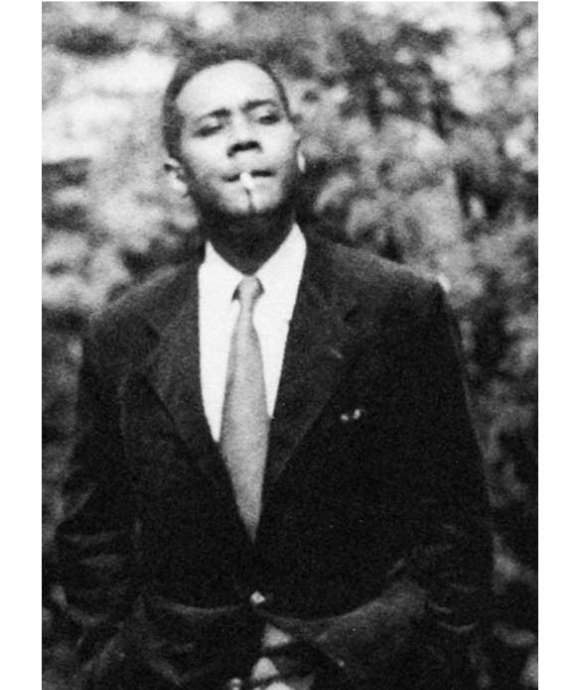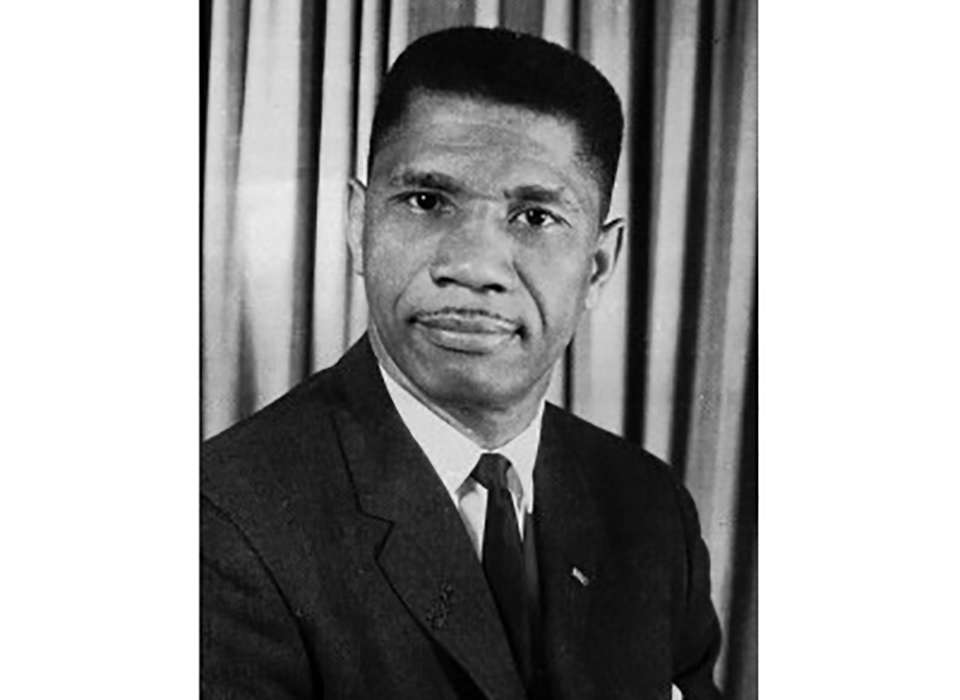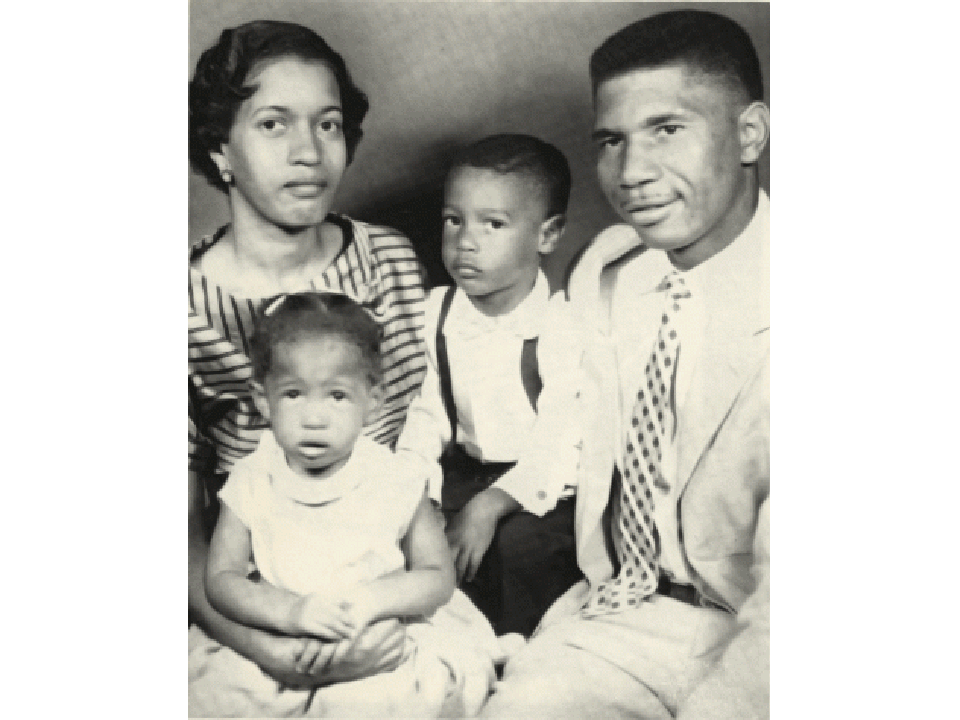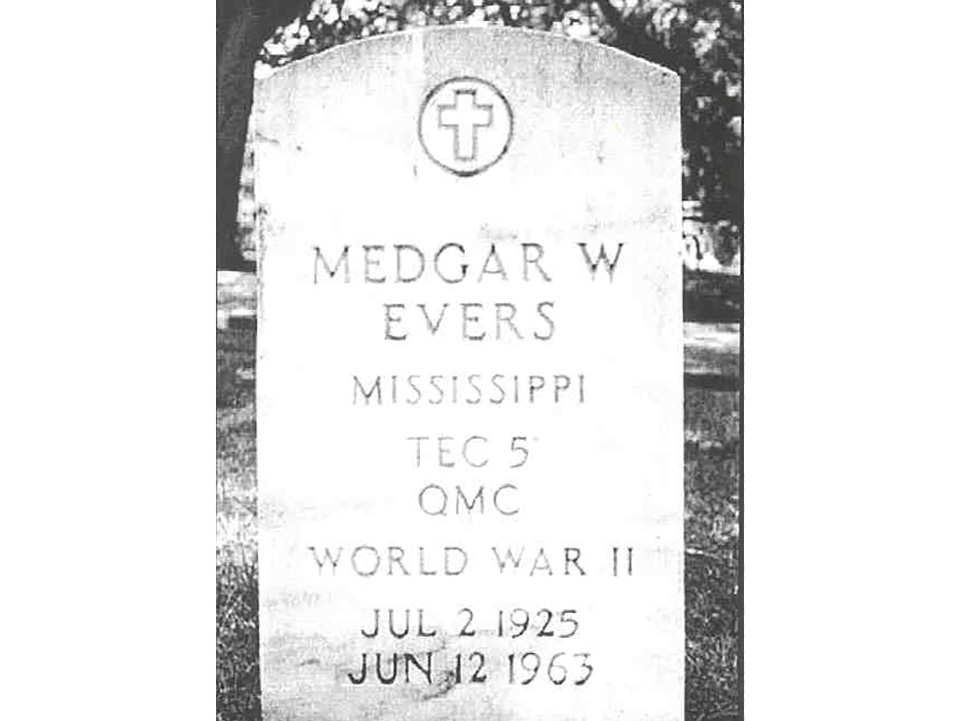Top Image: Medgar W. Evers (1925-1963). Courtesy of The City University of New York.
Medgar Wiley Evers was born on July 2, 1925, in the town of Decatur, in East-Central Mississippi. Growing up, Evers regularly witnessed the pervasive and violent racism directed at African Americans. When Evers was young, a white mob lynched a family friend, and Evers frequently saw gangs of white men looking for black people to assault.
In 1943, at the age of 17, Evers dropped out of high school to get a full-time job. The following year, he volunteered for service in the US Army and was inducted at Camp Shelby. During World War II, the vast majority of African Americans in the segregated US military were relegated to support units because white officers regarded black men as inferior combat soldiers. Consequently, the Army assigned Evers to an all-black port battalion in the Quartermaster Corps. Evers’ battalion was likely charged with unloading weapons, supplies, and vehicles from Allied ships onto trucks that then transported them to the front lines via convoys such as the Red Ball Express.
While serving in England and France, Technician Fifth Grade Evers grew frustrated with the demeaning treatment that he and other black servicemembers received while serving their country. He resolved to return to his home state of Mississippi and fight for the rights of African Americans. Shortly after Evers was discharged in 1946, he and his brother led a group of black veterans to the Newton County courthouse in Decatur to register to vote. Evers’ small group was met by armed white men who threatened the veterans with violence if they did not leave. Undeterred, Evers continued to advocate for the full citizenship rights of African Americans.
After returning to high school and obtaining his diploma, Evers attended Alcorn Agricultural and Mechanical College, where he met and married fellow student Myrlie Beasley. Upon graduating in 1952, the couple moved to Philadelphia, Mississippi, where Evers found work as an insurance salesman. Following the Supreme Court’s 1954 landmark decision Brown v. Board of Education, which declared segregation in schools to be unconstitutional, Evers applied to the University of Mississippi Law School. Although Evers was still denied admission because of his race, he later helped James Meredith become the first person of color admitted to the school in 1962.
Medgar Evers with his wife Myrlie, his son Darrell, and his daughter Reena. Evers’ third child, James, was born in 1960. Courtesy of The City University of New York.
Although Evers was unsuccessful in his bid to personally desegregate the University of Mississippi Law School, he caught the attention of leaders from the National Association for the Advancement of Colored People (NAACP). In 1954, Evers became the first state field secretary for the NAACP in Mississippi. Evers and his wife moved to Jackson to take up the new post. Myrlie Evers became an important part of the Civil Rights Movement in her own right as a researcher, musician, hostess, and secretary for the NAACP.
Evers’ work for the NAACP took him all over the state of Mississippi. He organized boycotts, voter-registration drives, and demonstrations, as well as investigated violence against African Americans, such as the 1955 murder of 14-year-old Emmett Till. Evers’ prominent position in the NAACP and advocacy for the rights of African Americans prompted numerous threats from white supremacist groups. Other civil rights activists, and even Evers’ own family, urged him to leave Mississippi for his own safety, but Evers refused to abandon the cause of freedom that he had fought for during World War II. Evers survived several attempts on his life, including nearly being run down by a car and having his home firebombed in May 1963. Myrlie Evers later remembered that other African Americans would cross the street just so they would not be seen close to her husband, lest they become targets as well.
At 8 p.m. on June 11, 1963, President John F. Kennedy, himself a decorated WWII veteran, delivered a live televised speech to the nation on the issue of civil rights. Kennedy implored his fellow Americans to examine their consciences in the wake of protests requiring the deployment of the 101st Airborne Division to desegregate schools in Birmingham, Alabama. Kennedy unequivocally stated that “the rights of every man are diminished when the rights of one man are threatened.” He claimed that discrimination was not a sectional issue, but a problem that existed in every city, in every state. It was a bold speech that all but one of his advisors tried to dissuade him from delivering. They knew there was little support for the civil rights legislation then being considered by Congress, and they advised the president against wasting valuable political capital.
Later that night, Evers was returning to the quiet suburban home he shared with his wife and three young children. As he stepped out of his car and made his way to the front door, he was shot in the back by a sniper concealed in a grove of trees several hundred feet away. His family heard the shot and ran outside to his aid. Evers died less than one hour later at the University of Mississippi Medical Center. Medgar Evers was just 37 years old.
The murder of one of the nation’s most prominent civil rights activist shocked many. Evers was laid to rest with full military honors in Arlington National Cemetery on June 19. Three thousand people attended the ceremony. On June 28, the cover of Life magazine bore the image of Myrlie Evers comforting her bereaved son at the funeral.
Medgar Evers’ grave in Arlington National Cemetery. Courtesy of Mississippi History Now.
Meanwhile, the FBI promptly took over the hunt for Evers’ killer. Within hours of the shooting, police had recovered the rifle used to kill Evers in the woods where his assassin had dropped it. The rifle bore a distinct fingerprint, which matched the WWII service record of a US Marine and self-proclaimed white supremacist named Byron De La Beckwith. Two weeks later, agents arrested Beckwith and charged him with the murder of Medgar Evers. Multiple eyewitnesses placed Beckwith and his car at the scene on the night of Evers’ murder, but two police officers mysteriously came forward to say they had seen Beckwith 100 miles away the night of Evers’ murder. Two all-white male juries failed to convict Beckwith despite the evidence against him. The governor of Mississippi at the time, Ross Barnett, even visited the courtroom during the trial to shake Beckwith’s hand.
For the next 30 years, Beckwith openly bragged about killing Evers and plotted to kill other activists as well. Finally, in 1989, calls to retry Beckwith prompted his arrest and extradition from Tennessee to Mississippi. Because Beckwith’s previous trials had resulted in hung juries, and therefore mistrials, the state of Mississippi was able to once again file charges against him. Hinds County assistant district attorney Bobby DeLaughter, who built the case against Beckwith for the new trial, explained its significance by saying “When you have somebody just shot from ambush in the back, while his wife and kids are right there in the house—shot not for anything violent that he did but just for what he believes—that leaves a great, gaping wound in a society.”
DeLaughter reconstructed the case against Beckwith nearly from scratch. He obtained a transcript of the original trial from Myrlie Evers, and by a stroke of sheer luck, DeLaughter discovered that one of his own family members had saved the murder weapon as a souvenir after the original trial. DeLaughter’s efforts paid off when a jury of black and white men and women convicted Beckwith of the murder of Medgar Evers in 1994. Beckwith received a life sentence and died in prison in 2001. DeLaughter’s successful prosecution of Beckwith in the high profile case prompted more than 20 other trials aimed at bringing the murderers of African Americans to justice.
While Evers’ memory was honored with songs, statues, and in the name of a new college, his family resolved to carry on his work. His older brother, Charles Evers, assumed Medgar Evers’ former post in the NAACP and subsequently served as the mayor of Fayette, Mississippi. Myrlie Evers-Williams later became the first chairwoman of the NAACP.
Medgar Evers once said, “you can kill a man, but you can’t kill an idea.” Evers’ death helped bolster public support for the Civil Rights Act that President John F. Kennedy had proposed and which was ultimately signed into law in 1964. The bill formally banned discrimination and segregation in jobs, housing, and education. The following year, the Voting Rights Act of 1965 finally outlawed poll taxes and literacy tests, which many states used to disenfranchise African Americans. The struggle for equal rights was far from over, however, as many more people lost their lives fighting for the full realization of the rights these bills promised.

History, Imperialism, and Revolution: C.L.R. James and Fascist Italy’s Invasion of Ethiopia
C.L.R. James (1901-1989) called for mass resistance to Mussolini’s invasion of Ethiopia in 1935.
Tyler Bamford
Tyler Bamford was the Sherry and Alan Leventhal Research Fellow at the Institute for the Study of War and Democracy at The National WWII Museum from 2019-2021. He obtained his PhD in history from Temple University and his BA in history from Lafayette College.
Cite this article:
MLA Citation:
APA Citation:
Chicago Style Citation:








![Max Fuchs, New York City cantor, sings as Rabbi Sydney [sic] Lefkowitz, Richmond, VA, conducts the first Jewish services from Germany.](/sites/default/files/styles/max_650x650/public/2025-10/image1.jpg)


